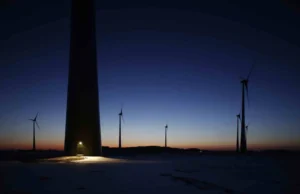A total of 12 Australian coal fired power stations have been shut down in the last five years. At least two more will be retired in the next five years, very likely to be joined by seven more around the end of 2020s.
In September Synergy will shut half of Muja AB, with the remaining two units scheduled for retirement in April 2018. (The Barnett state government controversially spent $310m refurbishing the station between 2009 and 2015.)
This will bring the total number of Australian coal fired power stations retired since 2012 to 13.
You can get the data with this Datawrapper link.
Counting Muja AB, that’s a withdrawal of 6.5 GW of capacity in a little over five years.
With current market prices 2–4 times the costs of generation, our remaining coal fired power stations are making out like bandits. Owners of the older ones have plenty of incentive to stretch out the lives a little longer, but with the renewables generation that is already contracted, both market prices and baseload requirements will fall — pushing out coal.
AGL has notified the market operator that it will close the 2000 MW Liddell power station in March 2022.
A large chunk of the fleet comes up for retirement around the end of the 2020s.
Origin Energy has announced that it will shut the 2,880 MW Eraring power station, Australia’s largest, ‘by the early 2030s’. AGL’s 2,180 MW Loy Yang A and 2,640MW Bayswater stations are a couple of years younger — AGL has announced that it won’t to run the stations past the end of their operating lives.
With Vales Point (1,320 MW) turning 39 and Yallourn (1,480 MW) and Gladstone(1,680 MW) both blowing out 41 candles this year, and Muja CD (854 MW) in the grade below, we can expect to see 15.1 GW of coal close from the late 2020s to the mid 2030s — possibly sooner.
No-one has built a coal fired power station since the end of last decade:
- Kogan Creek in Queensland was built in 2007 — the Minerals Council classifies the $1.2bn power station’s 945 kg CO2/MWh as ‘Low Emissions’. Yes, seriously.
- Bluewaters in WA was built in 2009 — less than two years into operation the $800m power station’s ultimate owner, Griffin Coal, went into administration.
With tumbling costs of alternatives, namely renewables, it’s highly likely these were the last coal fired power stations to be built in Australia. Leonard Quong of Bloomberg New Energy Finance puts it best:
Even if the government were to completely de-risk coal by paying for the whole plant and guaranteeing an exemption from any future liabilities, the lowest LCOE that could be achieved is AUD 94/MWh, which is still well above wind, solar or gas.
Which means shortly around 2030, give or take a few years, our coal fired power station fleet will be no more than 11 power stations, with a combined maximum capacity of just 9.6 GW — less than one-third of what was operating only five years ago.
In the meantime, according to the Australian Energy Market Operator’s projections we’ll connect 22 GW of new large scale wind and solar over the next 20 years and that by then we’ll have more than 20 GW of rooftop PV.
Every single panel and turbine installed reduces the need for baseload.
AEMO’s network development plan illustrates the decline of coal very clearly.
You can get the data with this Datawrapper link.
Notes
- The emissions intensities are kg CO2-e/MWh sent-out, i.e. after accounting for auxiliary load (energy consumed on site).
- Unless otherwise specified, emissions intensity values are sourced from the ACIL Allen report (referenced below).
- Swanbank B and Callide A are not listed in ACIL Allen report, so emissions factors are sourced from AEMO CDEII dataset.
- Muja AB and Kwinana were not listed in the 2016 ACIL Allen report and, as members of the SWIS, are not listed in the AEMO CDEII dataset.
Sources
- National Transmission Network Development Plan (NTNDP) 2014 Emissions Factor Assumptions Data (ACIL Allen), Australian Energy Market Operator (AEMO)
- National Transmission Network Development Plan Consultation Paper January 2016 and Plan December 2016, AEMO
- http://www.aemo.com.au/Electrici… AEMO
- Clean Energy Regulator ‘Greenhouse and energy information for designated generation facilities’ 2012–13, 2013–14, 2014–15, 2015–16
- New power stations in WA as Kwinana closes, WA Business News
- FactCheck: Have eight of Australia’s 12 most emission intensive power stations closed in the last five years?, The Conversation
Source: Quora. Reproduced with permission.














